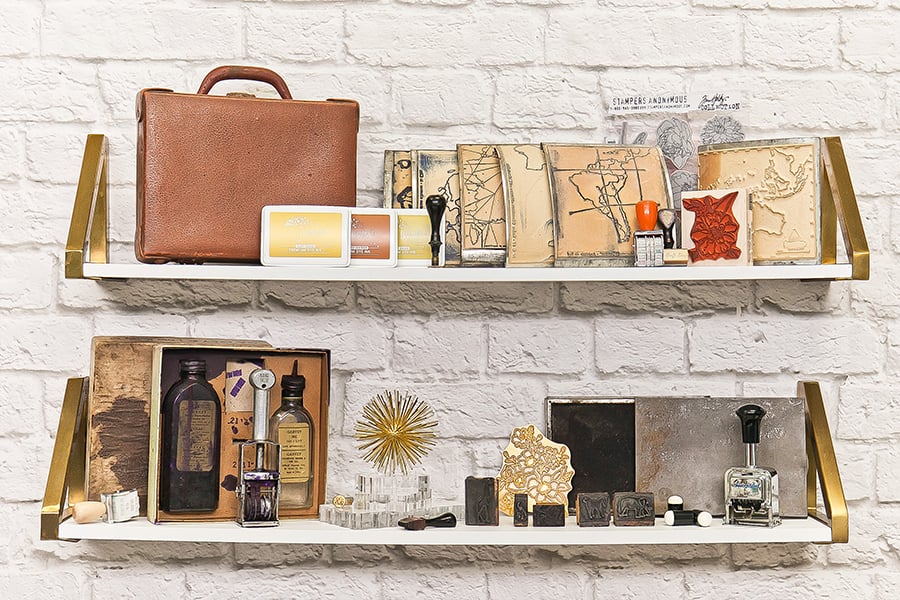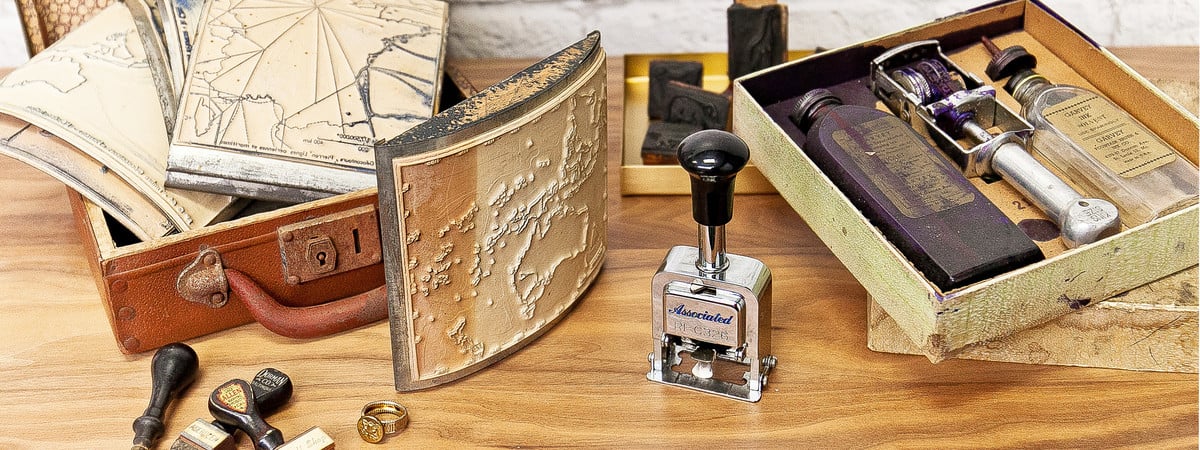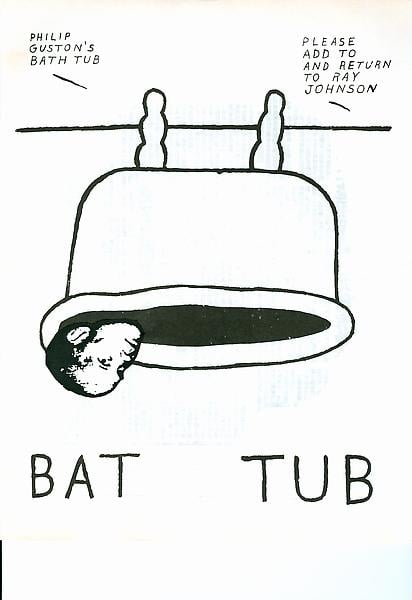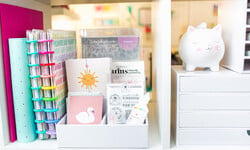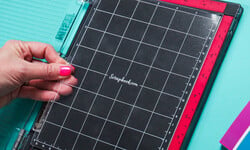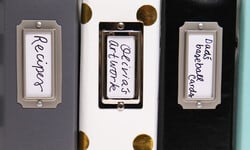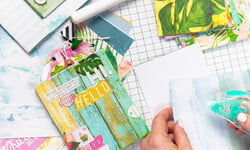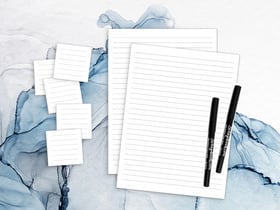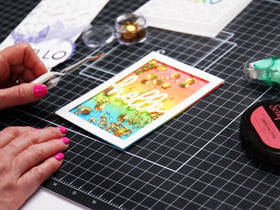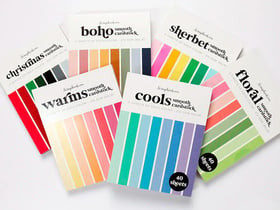Today, artists think of stamping as using a rubber or acrylic stamp to apply ink to a surface. However, stamping has a history that dates to ancient times, with printing ink and rubber being a relatively recent invention in the process.
The First Form of Stamping: Wax Seals
The oldest use of a tool resembling a stamp is an application that commonly didn’t use ink: the seal. Today, seals - usually in wax - are mostly used for decorative purposes, but for millennia they were critical for verifying the authenticity of products, correspondence, and official documents.
The use of seals is referred to in the Bible’s Old Testament, and archaeologists have found surviving examples of seals pressed into clay that even date all the way back to ancient Mesopotamia (that’s 5000-3500 BC). These seals would have been carved out of materials such as stone or bone. Some surviving examples are shaped like long tubes with holes down the center, presumably so they could be worn.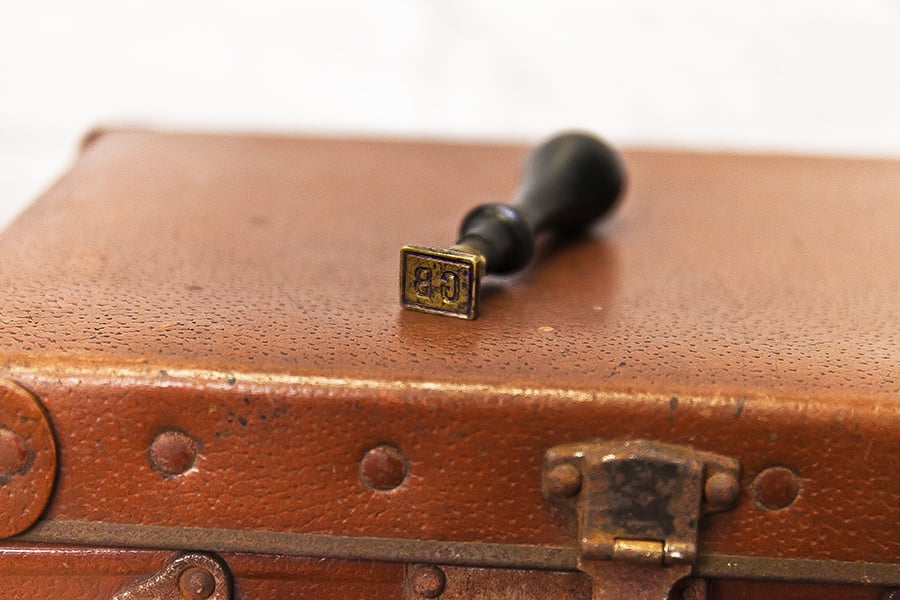
The wax seal, as we know it today for decorative uses, began to be used in the Middle Ages (500-1000 AD) to seal official government documents. Edward the Confessor is the first English king known to have used an official seal, and after that the “Great Seal of the Realm” carried much power. It was so integral to the kingdom’s ability to function that the legend holds that King James II, as a last act of defiance before fleeing after England was invaded by William & Mary (to take the throne) in 1688, threw the seal in the River Thames to cripple the invaders’ ability to rule the country.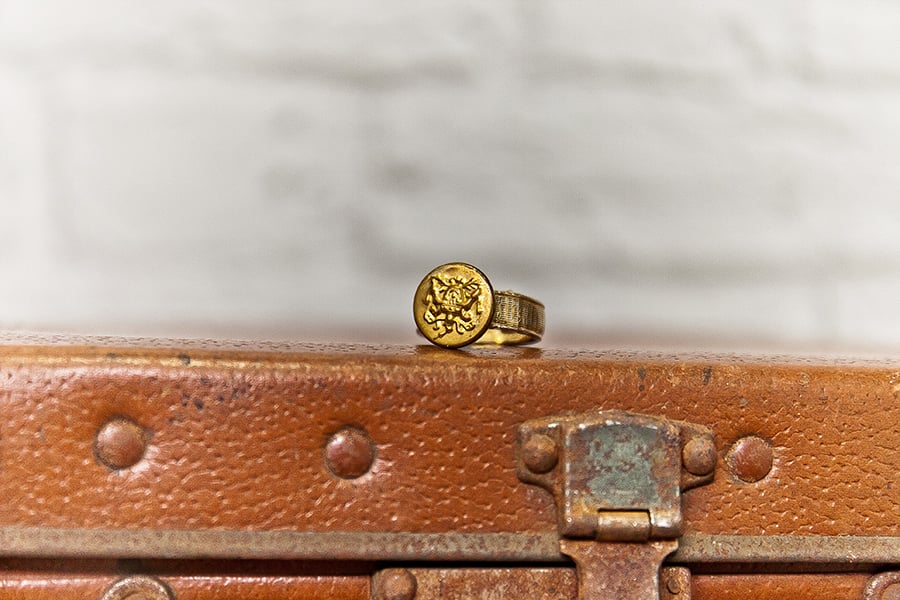
Signet rings, which allowed a person’s seal to be worn accessibly on his or her hand as jewelry, rose in popularity during the Middle Ages as wax sealing became more commonplace. The phrase “kiss my ring” is an allusion to the practice of showing allegiance to a high-ranking figure by kneeling and kissing his or her signet ring.
The most famous signet ring in use today is the “Ring of the Fisherman”, an important piece of the ceremonial regalia of the Pope. In a tradition that has been practiced since at least the 13th century, a new ring is made for each new Pope, bearing his name along with the traditional image of St. Peter as a fisherman. Historically, the old ring was ceremonially destroyed with a hammer after the death of the Pope it had belonged to, but more recently, the old ring has been marred with scratches in lieu of being completely destroyed.
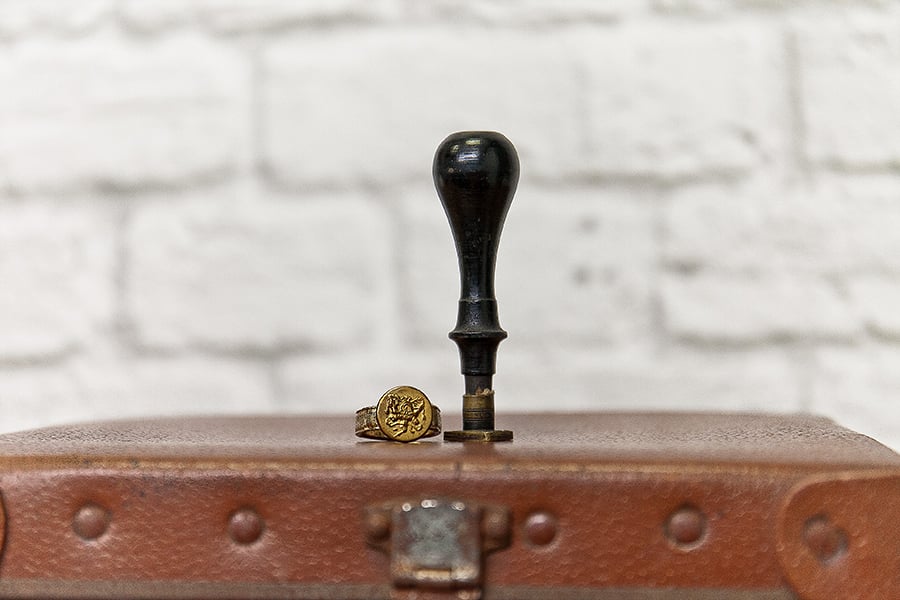
The use of wax seals in everyday life was made largely obsolete by two modern day things that we often take for granted: widespread literacy and gummed envelopes. With signatures replacing the seal as a sign of authenticity for everyday documents, and gummed envelopes providing security against contents being read or tampered with, the wax seal has faded into ceremonial and decorative use. Today, when seals are used for official purposes (such as by notaries or on official documents like birth certificates or passports) they are usually either in ink or embossed. Wax seals seen today are mostly used for formal, decorative purposes such as on upscale wedding invitations. You can learn more about how to use wax seals here and other places we find them in history here.
Wooden Prints
When it comes to something that we, today, would recognize as stamping, the earliest surviving examples come from Asia - and long before the invention of the printing press and movable type in Europe. These ancient tools were part of a process called woodblock printing, and they look very much like wood versions of modern rubber stamps. A craftsman would carve an image into the surface of a wood block, which would then be inked and applied to fabric or paper to create an image.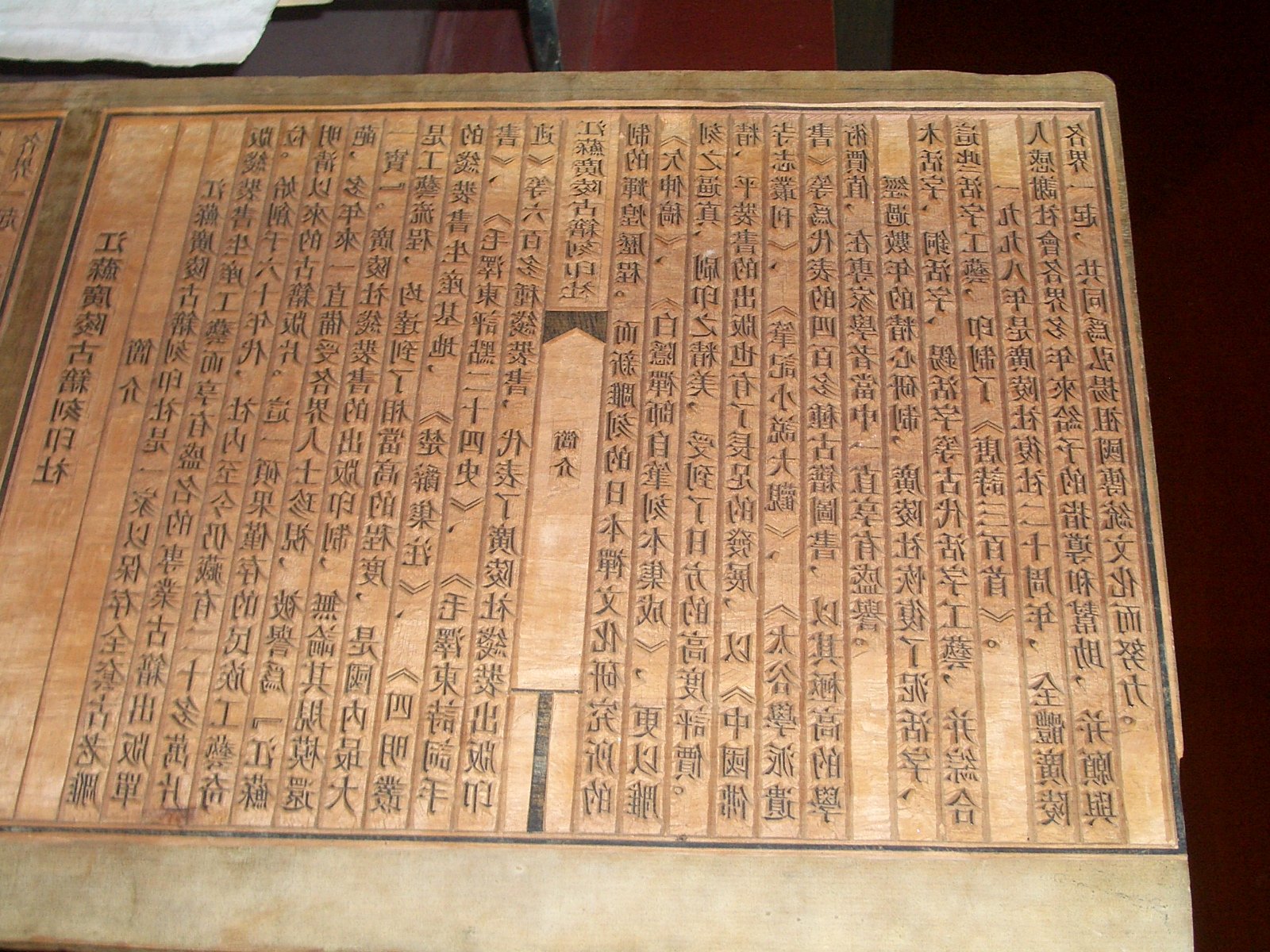
In Asia, woodblock printing was used extensively to create both textiles and books. Early samples of multi-colored woodblock printing on silk can be seen as far back as 220 AD in China. Although movable type was known in Asia at that time, it was not easy to apply the technique to the Chinese language, which contains thousands of characters. Instead, entire pages of text were produced as woodblocks as a way to print books.
The oldest known complete woodblock printed book is the Diamond Sutra, a Buddhist scroll found in China that is dated to 868 AD, and is now in the custody of the British Library. The Diamond Sutra was created by woodblock printing on seven different pieces that were then combined to create the complete five-meter-long scroll.
Woodcut printing is a similar process that developed simultaneously in Europe. The woodcut process was used mostly for creating images, including illustrations for early book editions, until the mid 16th century. Another popular application for woodcut printing was the production of playing cards.
Although it was not common practice in Europe, as it was in Asia, some short books were printed by woodcut printing in the late 1400s, after the invention of the Gutenberg Printing Press. Invented by Johann Gutenberg, the Gutenberg Press was created by reinventing the wine press! Because of this, books could now be printed much more easily than formerly used Eastern methods, which were not adopted by the west. These books, called block books, were mostly religious titles. The first book to ever be printed in the west (by Gutenberg) was the Bible, in 1454. Historians believe that block books arose during that period as a more affordable alternative to press printed books, which, like any new technology, were quite expensive.
Several well-known artists worked in Europe making woodcut prints over the course of the 15th to 19th centuries. Perhaps the most famous of these prints belong to Albrecht Dürer, a German Renaissance artist. Dürer’s religious-themed woodcut prints, created in the early 1500s, can be found today in the collections of museums all around the world. Other artists who experimented with the medium of woodcut printing include famous painters like Hans Holbein, Edvard Munch, and Paul Gaugin. 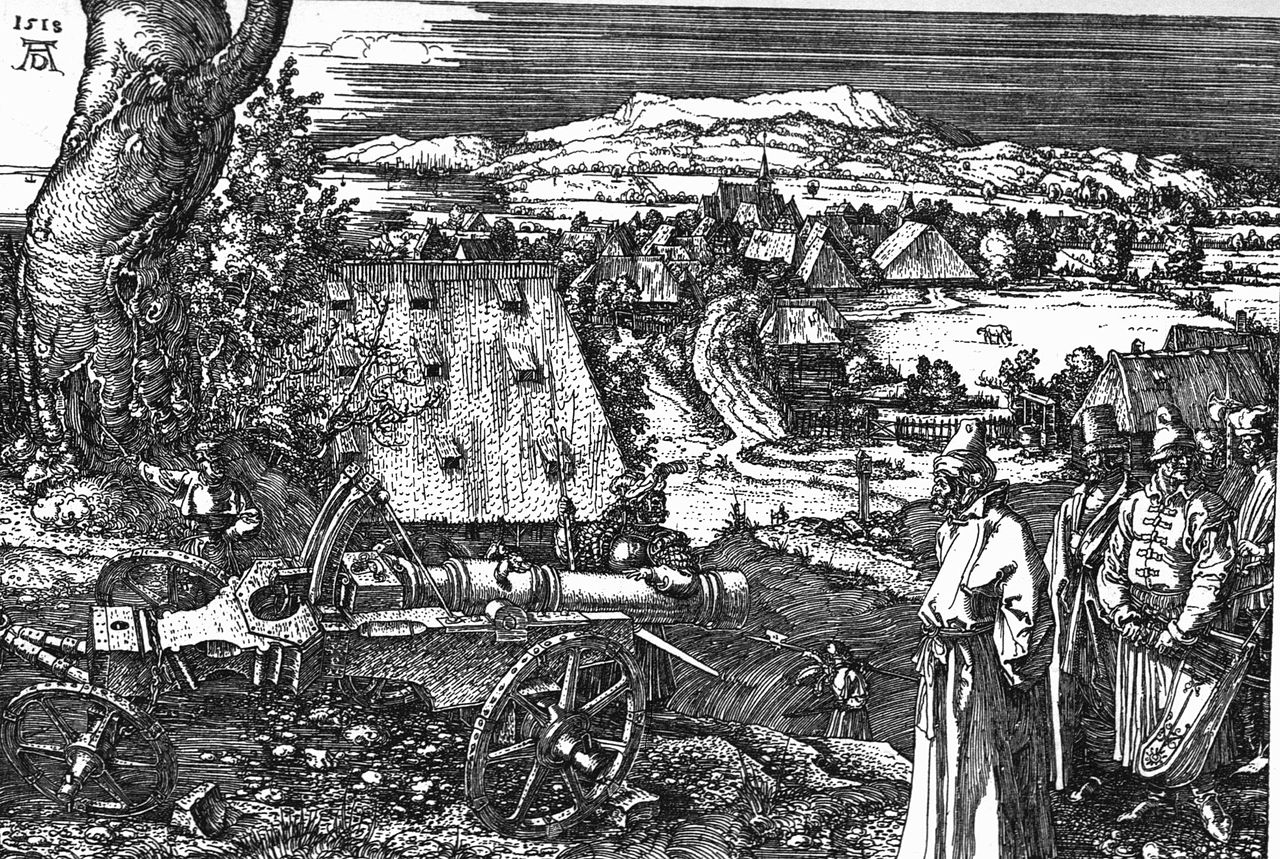
While artists in Europe were dabbling in woodcut printing, the practice was growing into a major art form in Japan. Woodcuts (or woodblocks) became an important and abundant part of the popular Ukiyo-e style of art that was now accessible to the country’s growing merchant class. This Ukiyo-e art, especially woodcuts, began to be imported into the west starting in the late 19th century. Its influence infused Japanese themes into the work of many Romantic, Impressionist, and Post-Impressionist painters (19th - early 20th centuries), and sparked a renewed interest in woodcut printing (which had waned) in the west.
The History of Stamping Ink
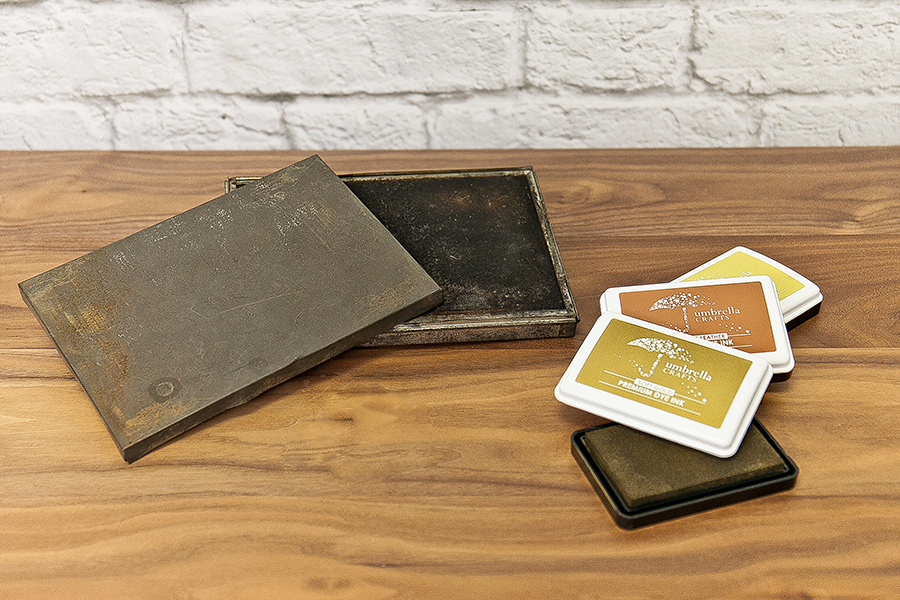
Along with the invention of the block, for printing, an important sister-invention made the evolution of stamping as we know it today possible - and that's ink, specifically intended for printing and stamping.
When the Gutenberg press was invented (1450), books were printed with an oil-based ink spread - which was tricky, slippery, and did not dry quickly. These original inks were created with linseed oil and stuck easily to the metal surfaces of the press in order to create a clean print. Creating these inks was a lengthy process due to the nature of the oil. Once created, the ink had to sit for at least a year so that any sticky substances within it could settle and not be floating around in the oily ink.
Because of oil's debilitating dry time, it's possible that litharge (lead monoxide, often used in ceramic glazing) was added to help speed that process up. Over time, other vegetable oils were used, in trial and error. By using heat and vegetable oils rich in fatty acids, the dry time was also shortened.
In the 19th century, the addition of petroleum distillate (a solvent) shortened the dry time even more. This discovery was very important in the invention of color printing inks. Because of petroleum distillate's excessive use in ink making, a new way to create inks was sought after during a petroleum shortage in the 1970s, which led to the eventual creation of water and pigment based inks.
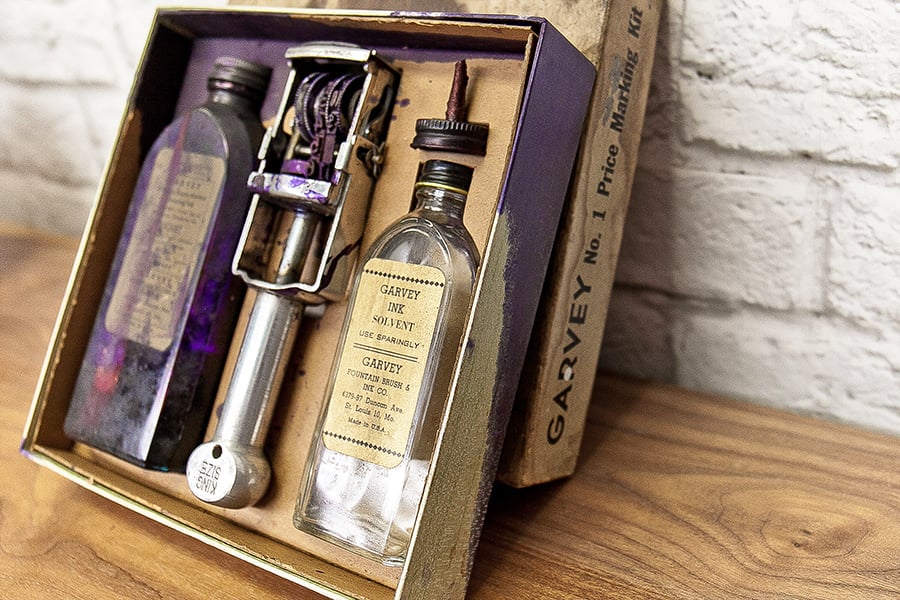
Ink pads, which came in tins with pre-inked pads that soaked up and held ink, not unlike ink pads today, could be purchased earlier than the turn of the 20th century. Another option, popularly used in commercial stamping, was mixing the ink oneself, with a concentrated bottle of the pigment and a separate bottle of the solvent.
Today's craft stamping version of these mixing bottles would be reinkers - though the pre-mixing is already done for you!
The History of Rubber

The development of the rubber stamp is inextricably intertwined with the history of rubber itself, as one would not be possible without the other.
Rubber, which comes from several tropical plants, originated in MesoAmerica. Early commercial production of rubber, in the early to mid 1800s, was focused in Brazil, where the rubber producing Hevea plant grew natively. By the late 1800s, production of natural rubber was being cultivated in plantations in several other areas of the world, including India, which remains a leading producer of natural rubber today.
The sticky, unstable substance had been known of and used by native civilizations like the Maya and Aztec for centuries. The first scientific recording of rubber, by European scientists, wasn’t until 1736, though, when famed French explorer, Charles Marie de la Condamine, sent a sample of rubber back to Paris for study.
Most people think of tires, not rubber stamps, when they hear the name Goodyear. But in fact, it was inventor Charles Goodyear’s accidental discovery of vulcanized rubber (vulcanization is a chemical process that turns naturally found rubber into a more durable material. This is done by adding curatives, like sulfur, and sometimes accelerators). This discovery took place in 1839 – when Goodyear dropped some rubber on a hot stove – that made both the tires his name is famous for and the invention of rubber stamps possible. By 1844, he had perfected the process enough to be granted a U.S. patent on it. Before the perfection of vulcanization, rubber was too unstable and unworkable of a material (sticky and prone to melting in warm temperatures) to be truly useful for creating items such as rubber stamps.
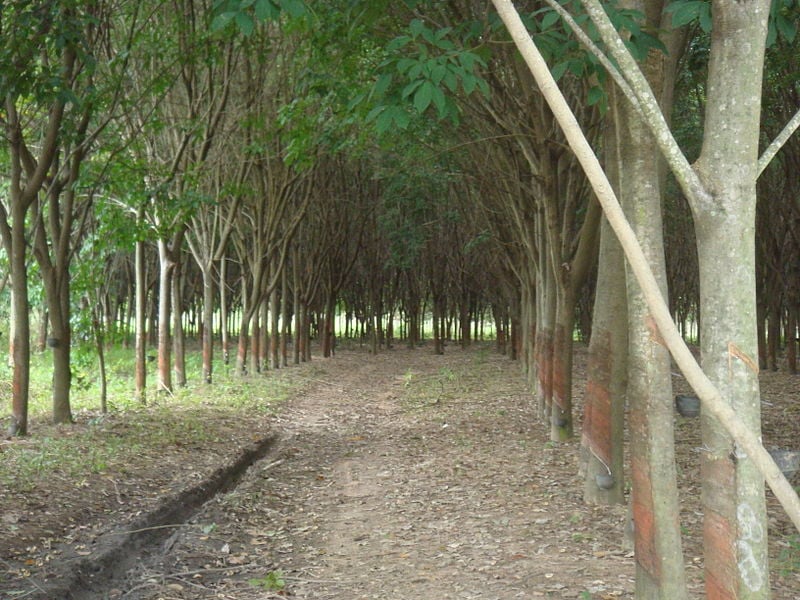
After World War II, processes for producing synthetic rubber from petroleum and natural gas became widespread in commercial use. These processes had been somewhat known to scientists for decades, but their development was accelerated out of necessity during the war due to a lack of access to natural rubber from Asia. Today, well over half of the rubber sold is synthetic, and the rest comes from commercial rubber plantations in Asian countries such as Thailand, Malaysia, and Indonesia.
Who Invented the Rubber Stamp?
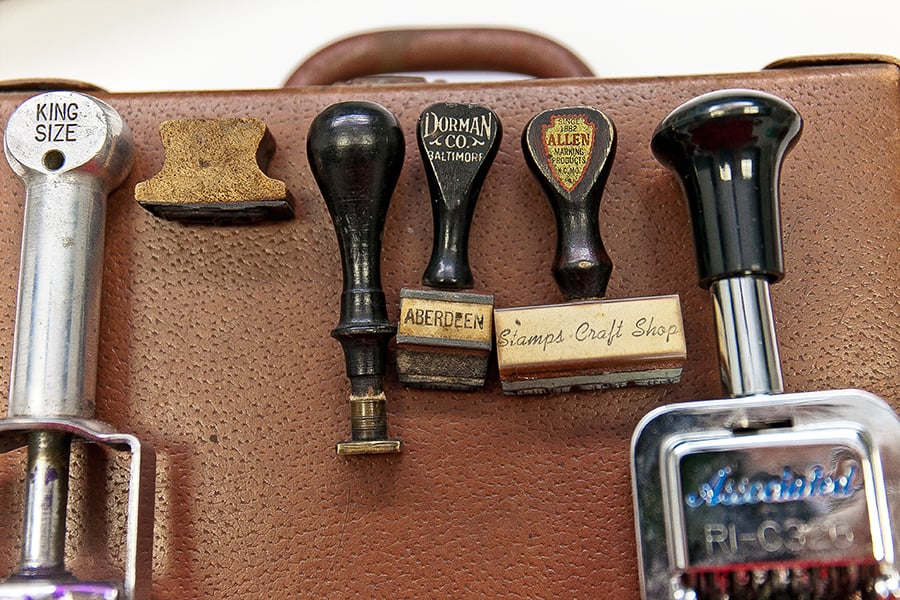
How the world got from the invention of vulcanized rubber to the invention of the rubber stamp is a somewhat uncertain path with lots of interesting characters. No fewer than three different inventors claimed to have invented the first true rubber stamp in various parts of the U.S. in the mid-1860’s. Their claims come with varying degrees of credibility. It’s entirely possible that more than one of the men was telling the truth, and that multiple people independently developed the concept in parallel during the same period.
Perhaps the most credible claimant to having invented the modern rubber stamp comes from a New Yorker named James Orton Woodruff. Sometime between 1864 and 1866, Woodruff witnessed wooden washtubs being stamped with hand carved rubber letters mounted on curved wooden blocks and using printer’s ink as the color medium. Although this already sounds suspiciously like a stamp, Woodruff seems to be given credit for inventing the rubber stamp because he thought to use vulcanization to improve the basic tool that he witnessed being used, and because, he began a well-publicized business to mass produce custom stamps. None of his stamps are known to remain in existence today, as the inks of the day contained solvents that destroyed the rubber, but some of his company’s stamp blocks reportedly still exist.
Henry C. Leland, from Massachusetts, also claimed to have made the first rubber stamp (a claim widely viewed with skepticism). Leland, by then an old man, gave an interview in 1910 to the publication Stamp Trade News in which he claimed to have invented the first rubber stamp in 1863. Leland was a salesman selling metal stamps at the time of his claimed invention, and said that the impetus for his invention of the rubber stamp was a customer who wanted to be able to stamp round broom handles. After supposedly spending years working on the invention, Leland claimed to have lost interest in filing a patent after being swindled out of part interest in his invention by a relative’s scheme.
The third claimant, L.F. Witherell, of Galesburg, Illinois, claimed in 1916 that he was the inventor of the rubber stamp. He claimed to have created the first rubber stamp in 1866, while trying to find a better way than paint or metal stamps to stamp pumps he manufactured. Witherell told of creating his stamp by attaching rubber letters to a bedpost handle, then using them to stamp the pumps. Unfortunately, he failed to produce the prototype of his rubber stamp when asked to prove his claim in later years, after having vowed to be in possession of it. This cast doubt on his claim to the invention in many eyes.
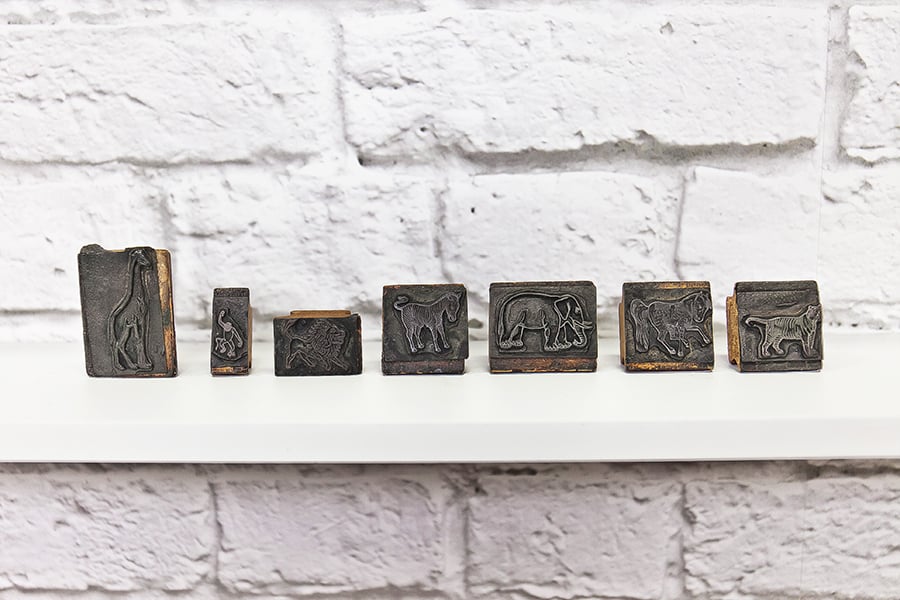
Despite their differences, several of the rubber stamp invention stories had something in common: they almost all relied on the use of dental vulcanizers, used to make the base for false teeth, as relatively affordable and convenient sources of vulcanized rubber. Who could have imagined that the history of dental technology and crafts were so intertwined?
The New Industry of Rubber Stamps
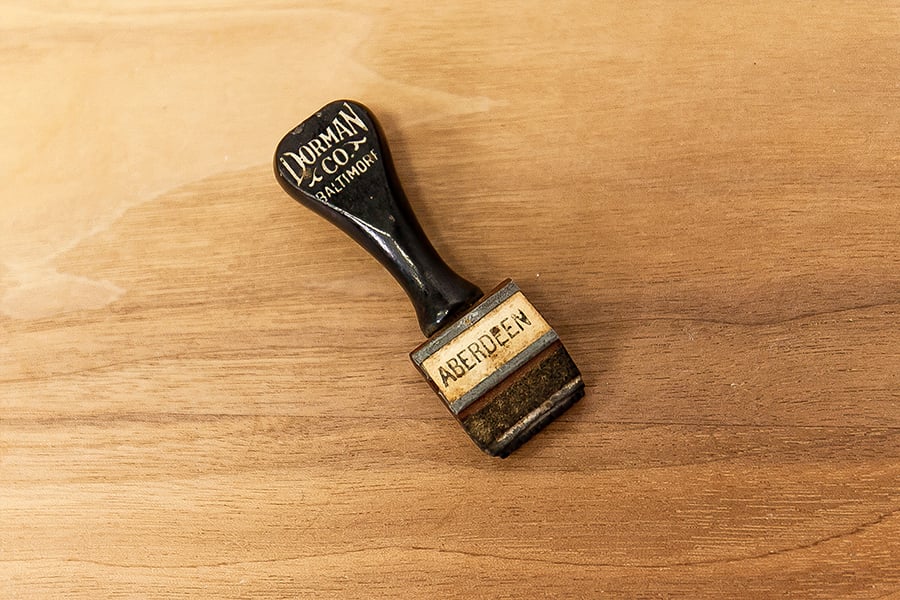
It may be debated who invented the rubber stamp, but there is little debate about who first successfully commercialized the concept. J.F.W. Dorman was a teenage traveling stencil salesman when he was introduced to the concept of the rubber stamp. By 1866, his Baltimore based company was making stamps. Dorman revolutionized the stamp making industry when he patented a steam vulcanizer in 1889 that was designed specifically to produce stamps, replacing the dental vulcanizers previously used by stamp makers.
By 1892 there were at least 4,000 companies making rubber stamps and, in 1911, a trade association was formed. The International Stamp Trade Manufacturers Association still exists today, after having gone through several name changes. Today, it goes by the International Marking and Identification Association and has expanded to cover businesses far outside of rubber stamps.
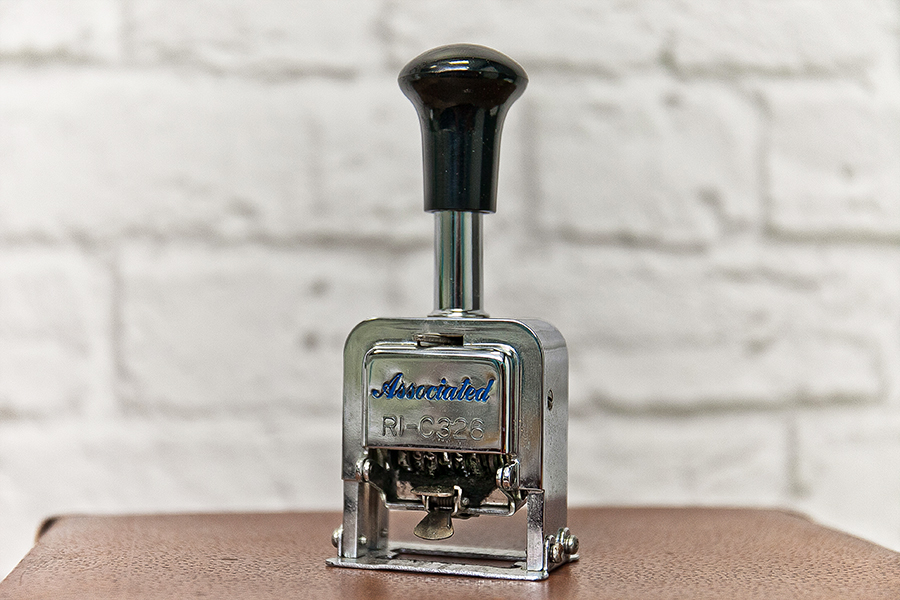
Early commercial stamps were focused on business uses such as dating and numbering. In 1886 B.B. Hill patented the self-inking stamp, a revolution in office automation that can still be seen in use today.
Rubber Stamps in Education
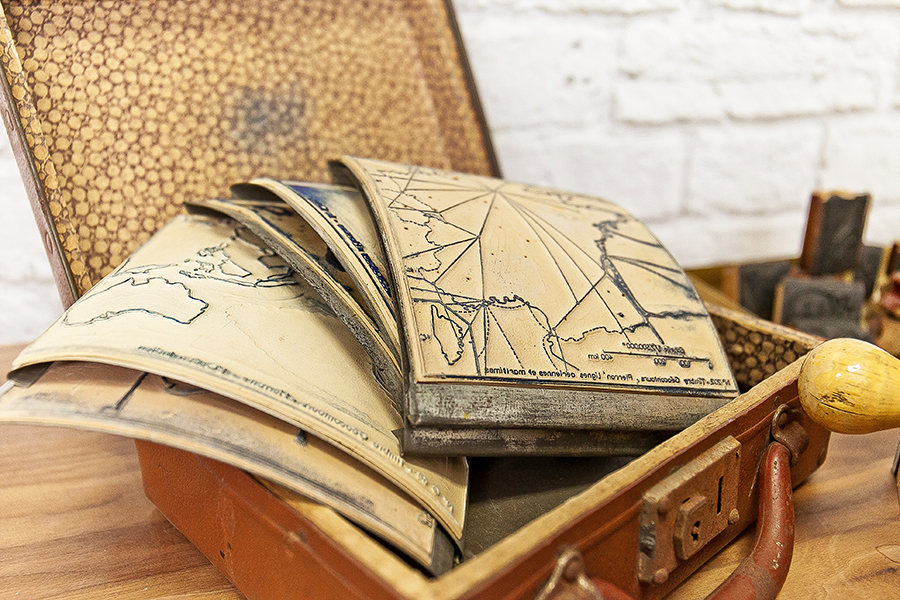
Another focus of early stamp production was in the classroom, making rubber stamps one of the first technological innovations in education. Stamp companies produced alphabets and other types of sets that could be used for classroom activities by teachers. It’s believed that the first stamps of graphics were produced for classroom (and non-decorative) use. During the Depression in the 1930s, stamp sets that teachers could use to create classroom materials were especially important since schools did not have money to purchase textbooks and workbooks for students.
Stamps largely disappeared from the classroom in the second half of the 20th century, replaced by technology such as the mimeograph (a machine used to copy stencils) and the copy machine. But their abundant use did continue in most schools well into the 1980s (and even 1990s) in another location: the school library. Who can forget those checkout cards filled with scrawled names and stamped due dates, or sitting in the library hearing the click-click of the librarians stamping books being checked out?
Rubber Stamps in Art
The first recorded use of rubber stamps in art began in pre-revolutionary Russia around 1912 with the Futurists Movement. These dissident poets used rubber stamps to produce their works of book art containing their poetry. This book art was not dissimilar to today’s mixed media art journaling, blending together hand writing and sketching, stamping, stenciling, and other media.
The mail art movement, which was founded in the 1940s, began the creation of what we now know as the modern decorative rubber stamp industry. Mail art’s creation is credited to American artist Ray Johnson, who began to experiment with correspondence art around 1943, although the term “mail art” didn’t come into use until the 1960s.
Artists who created mail art traded small scale pieces of art via the mail, and began using decorative rubber stamps in their art in a mimicking of the postal service’s cancellation stamps. Although it waned in popularity with the arrival of the internet in the 1990s, the practice continues to this day. Postcards are a currently popular form of mail art, due both to their simplicity of form and their affordability in an age of rising postage.
Although today the two activities are both considered an integral part of the papercrafting, rubber stamps were not used much in memory keeping during the early days of the scrapbooking boom (that started in the 1990s). It wasn’t until about a decade ago, as scrapbookers began to discover card making, that the rubber stamps that had long been a part of other paper arts, became a staple of scrapbook design. Today, rubber stamps are used for backgrounds, journaling, card making, and decorative elements on scrapbook pages.
The World's Largest Rubber Stamp
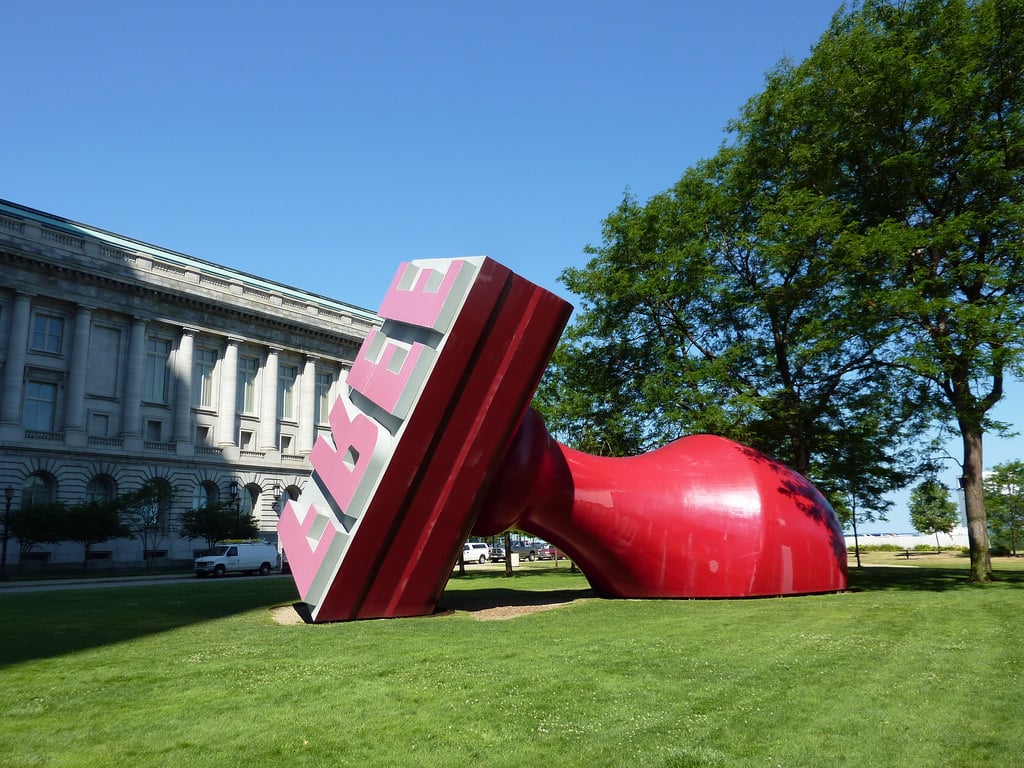
There may be friendly debate among crafters about who has the largest stamp collection, but there is no debate about who has the largest stamp. The 1980s were all about bigger is better – and that included rubber stamps. In 1982, the world’s biggest rubber stamp was designed. The world’s largest stamp was not a stamp at all, but was, in fact, a sculpture by artists Claes Oldenburg and Coosje van Bruggen. Commissioned by Standard Oil of Ohio to sit outside their new Cleveland headquarters building, the stamp sculpture said “FREE” and was about 25 feet wide in giant letters.
The word was intended as a tribute to the freedom of slaves after the Civil War. But, before the sculpture could be installed, SOHIO was bought by BP, and the world’s largest stamp ended up banished to limbo in a warehouse amid a misunderstanding about the word’s intended meaning by the artists. The sculpture was eventually donated by BP to the City of Cleveland. After some negotiation between the city and the artists, a new home was found for the sculpture in Willard Park. It was unveiled there in 1991, and can still be visited today, looking as if it were flung to the park from its originally intended home at the nearby BP building.
Stamping Today
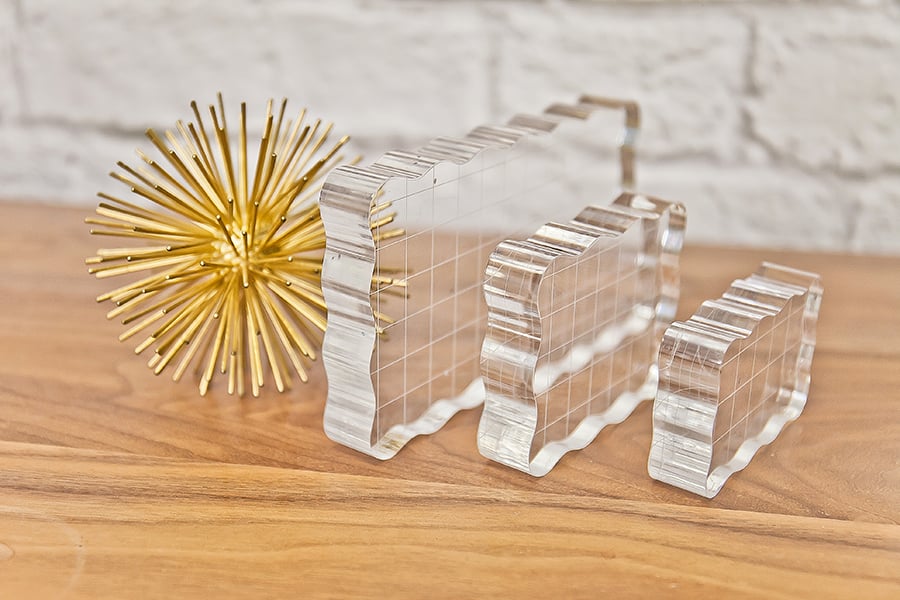
The current rubber stamping trend is perhaps the perfect blend of their origin as a functional tool with the modern art stamp.
With advancements in technology, the last decade has also seen photopolymer stamps rise into overwhelming popularity. Photopolymer stamps, more commonly known as clear acrylic stamps, are stamps made out of photopolymer. They are transparent, coming on plastic sheets, and used with acrylic blocks to add onto desired surfaces. Acrylic stamps have risen in popularity for a couple main reasons. Because they are photopolymer, they are clear, meaning with the use of a clear acrylic block, the stamper can see the exact positioning of his or her stamp, prior to leaving a mark on the page. The second reason is cost. Acrylic stamps are much less expensive to make, making them much more accessible to many crafters. However, rubber stamps continue to be popular, due to long lasting beloved brands continuing to make rubber stamps (as well as newer crafting brands) and rubber’s reputation for being high quality, durable, and long lasting.
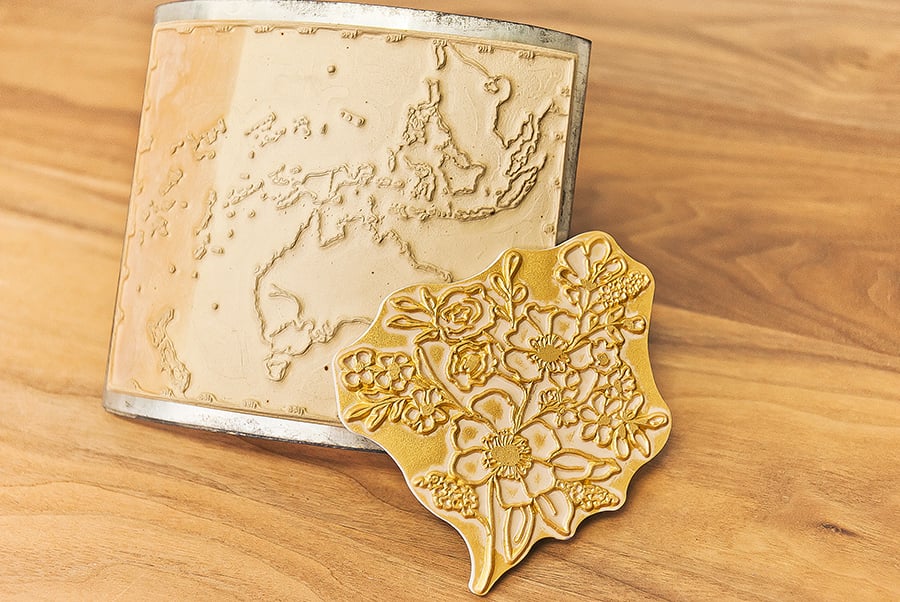
Used by crafters of all kinds, stamps, both rubber and photopolymer, are popular artistic tools for cardmaking, scrapbooking, journaling, even planners. Decorative planner calendars, where artists take planner calendars and journal and embellish them to record their lives, have become immensely popular as both a planning tool and a method of memory keeping. Enthusiasts of the art collect decorative stamps themed with dates, days of the week, holidays, and other items to decorate their planner pages.
So, the next time that you get out a rubber stamp, press it into a pad of ink and prepare to make art…perhaps take a moment to pause and consider the thousands of years of technology – and artists – that came before you and made rubber stamping the enjoyable past time and craft that it is today.
